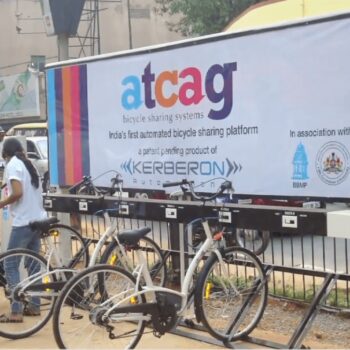With financial inclusion finding a place in the international policy agenda, many developing countries are facilitating the development of their microfinance sectors. However, not enough attention has been paid to carving out a route for microfinance borrowers who outgrow microfinance, requiring loan sizes higher than the upper threshold of microcredit, yet too small to avail of small and medium-sized enterprise (SME) credit from commercial banks. Other small enterprises that are unbanked also have needs unmet by either microfinance institutions (MFIs) or commercial banks.
While the “missing middle” is often used in the literature to describe the lack of SMEs in firm size distribution in developing countries, here it is used to refer to the lack of financing options for enterprises whose needs fall in between the typical loan sizes offered by MFIs and commercial banks. As these enterprises have the potential to act as decentralized sources of employment and economic growth in many developing countries, their access to financial services should be a key policy objective.
A recent study examined the missing middle issue in Bangladesh, India, and Pakistan—countries with large, vibrant microfinance sectors—focusing on options currently available to such firms, lending models used, and recent policy initiatives.
Bangladesh, the earliest microfinance market, was the first to observe and address the needs of enterprises that outgrew typical microfinance loans. There, MFIs are treading carefully. Although MFIs are permitted to provide larger loans, bigger MFIs dominate the sector, as smaller ones are constrained by availability of funds. No credit bureau exists for MFIs, which increases risk levels, because the total indebtedness of borrowers cannot be easily ascertained. This preexisting high risk reduces the incentive for lenders to provide larger loans. The uncertain political climate also makes these loans riskier since small businesses are often affected by shutdowns and damage caused by frequent political disturbances.
In India, nonbank MFIs can lend up to 15% of their net assets in nonmicrofinance loans, and some have begun providing larger individual loans to select group borrowers who run businesses with the potential to scale up. In addition, some nonbank financial companies focus on niche segments within the missing middle, such as loans for commercial vehicles or asset acquisition. In rural areas of India, rural banks cater to micro, small, and medium-sized enterprises (MSMEs), and their experience with loans to the missing middle is mixed. To cater to this segment, in April 2015, the Micro Units Development and Refinance Agency (MUDRA) Bank, a public sector financial institution, was launched. Moreover, with nine MFIs receiving small bank licenses, the high-touch microfinance model has the potential to be combined with the resources of banks.
All large MFIs and banks in India report to credit bureaus so information is being shared, preventing multiple lending and helping first-time borrowers build credit histories. However, as lending to the missing middle segment is new, market studies and experimentation with various lending models may be required. Unlike in the case of group lending, variations in models in different regions of the country may be required, as business practices may vary.
In Pakistan, although the overall penetration of the microfinance sector is low, some microfinance banks have begun providing larger microenterprise loans and a few are even scaling up their products after initial success. A positive factor is that a credit bureau has been set up. Moreover, recent efforts such as the establishment of the Pakistan Microfinance Investment Company for mobilizing investors to channel funds into MFIs may help to increase funding for MFIs, and should also eventually reduce the interest rate on microfinance loans. However, political disturbances and electricity shortages are risk factors that could affect the performance of microenterprise loans.
Successful models in the three countries have two features in common:
- The credit appraisal of potential borrowers involves lenders spending considerable time in observing the business, interviewing promoters, cross-checking records, analyzing the business model, and assessing suppliers and customers.
- The assessment often involves customer education on financial accounting practices, either formally or informally. As an example, often, lenders must draw up cash-flow statements for potential borrowers.
Other factors that have contributed to success include acceptance of notional security, such as original land documents and identity cards; separation of the credit function from the sales function within the lending organization; developing in-house model cash-flow statements for specific sectors that are commonly financed; and creation of forward and backward linkages for potential customers (i.e., facilitating partnerships of customers with input suppliers and end-users on favorable terms). These measures call for upfront investments in employee time before obtaining any financial returns from the enterprise; indeed, they require top management commitment to building a robust microenterprise lending model. In the long term, the benefits of this strategy can pay off through repeat business as well as savings in recovery and loan write-off costs.
MFIs are well placed to expand their services to the missing middle segment given the high-touch nature of lending involved and guidance required. Many, for years, have based their operations on a one-size-fits-all group model, so moving to individual lending requires considerable investment in training and developing new management information systems. Women’s World Banking, a global non-profit organization, has developed resources for this purpose, including a detailed guide on introducing individual lending in institutions that currently provide group loans.
Demand for finance by missing middle enterprises is high in Bangladesh, India, and Pakistan. Their governments should address their needs by supporting lenders with more funding options, making reporting to credit bureaus compulsory, funding financial literacy campaigns targeted at microenterprises, introducing measures to reduce the use of cash-based transactions, and making registration of enterprises easy and universal. Catering to the financing needs of missing middle firms has great potential to invigorate and make South Asian economies more inclusive and dynamic.
____________________________________________
About the Author
This article was written by Savita Shankar of Asia Pathways, a blog of the Asian Development Bank Institute established in 1997 in Tokyo, Japan, to help build capacity, skills, and knowledge related to poverty reduction and other areas that support long-term growth and competitiveness in developing economies in the Asia-Pacific region. Savita Shankar is an associate professor at Keio Business School, Keio University, Yokohama, Japan.






























